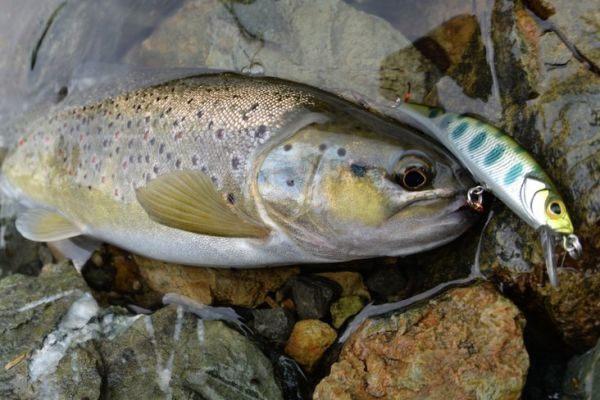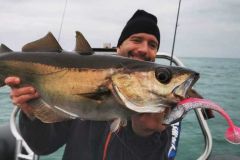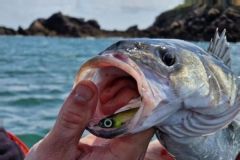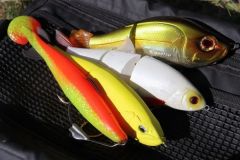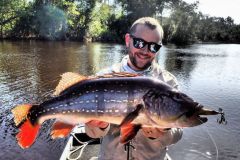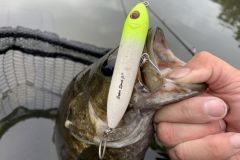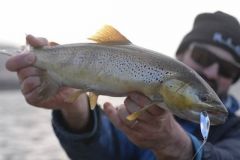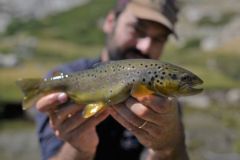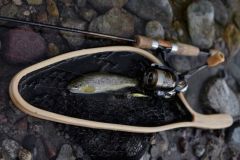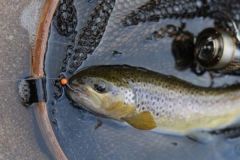Sinking minnows are characterized by their high density. They are denser than water (water has a density of 1, for a density of 1g/cm3) and have a density of more than 1. To achieve this, they are heavy and compact, i.e. low in volume. They have a pisciform (fish-like) silhouette and high inertia.
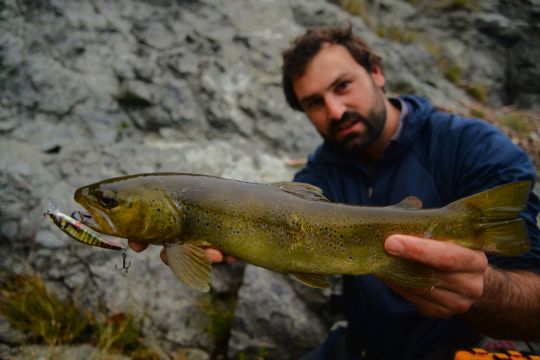
It's this inertia that has baffled many anglers. Indeed, these dense minnows swim and move with greater difficulty and energy than their less dense floating or suspending cousins. You have to get inside them to make them move.
The advantages of sinking minnows
Firstly, they are shaped like a fish (pisciform) and are highly suitable for luring trout, many of whose diet consists of other small fish. Secondly, these sinking minnows are highly inertial. In other words, you need to generate a certain amount of force to move them. This makes them ideal for fishing strong currents and certain positions, without being too easily "swept away" by the force of the current.
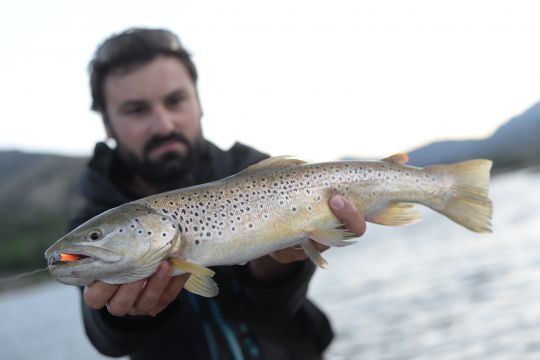
You'll be able to fish efficiently and hollowly under waterfalls, rocks, powerful veins... They can also be used judiciously to fish precise upstream positions.
This compactness and density are also a plus when it comes to precise casting on small-area stations that require the lure to move precisely.
The animations are mainly marked jerks and twitches imprinted by the angler via scythe strokes. These will throw the lure off-center, giving it a wide stroke, a strong roll and a wiggle. This makes the lure attractive and very present, even on "short" spots where the current is strong.
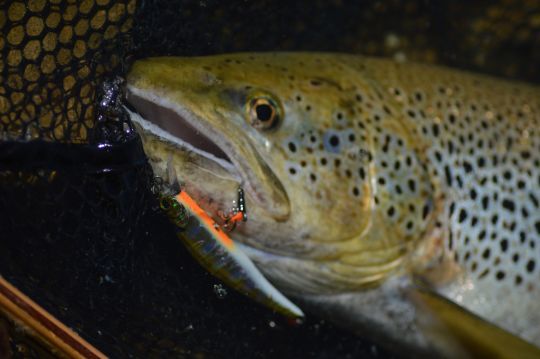
I also use these lures a lot for beating ground on lakes and fishing hollows there too. They cast far, even into the wind. Let them sink to the desired depth, then bring them back quickly or with nervous twitches that arouse the trout's curiosity and invite them to attack!
The right equipment
To animate sinking minnows and transcribe handle strokes well, you need a rod that's responsive and directive. With a rod that's too "soft" or parabolic, more suited to metal lures, animations will be absorbed by the rod and poorly transmitted to the lure. You'll either have to force the movements or have a sinking fish that doesn't swim far enough... Both cases are to be avoided. For streams, torrents and the use of small swimming fish (less than 5 grams), nylon does the trick and can handle what a nervous rod cannot. It avoids too many stalls, especially when fishing upstream.
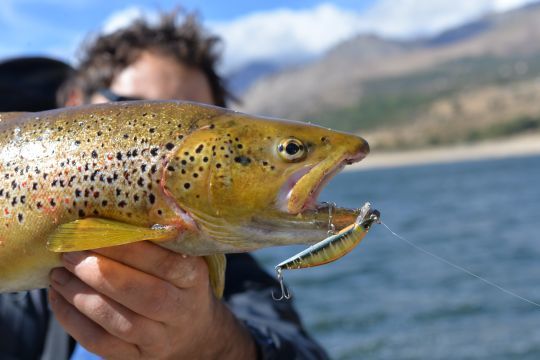
In large rivers, for downstream fishing, or in lakes, braid offers greater precision when working with large swimming fish (over 5 grams) and the size of the fish, often more substantial, naturally pushes the rod to bend and take the weight of the fish.

 /
/ 